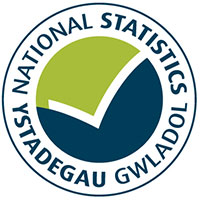This report presents findings of the energy efficiency of dwellings in Wales (including heating and energy saving measures) across both the social and private housing sectors. It builds on the headline figures published in December 2018.
This is the latest release in the series: Welsh Housing Conditions Survey
This report provides statistics on Energy Performance Certificate (EPC) and Environmental Impact (EI) ratings. It also includes:
- details of energy saving measures installed in dwellings and breakdowns of construction types
- the number of dwellings making use of renewable energy
- heating systems, main fuel type and type of boilers used
- comparisons between tenures, dwelling types and urban/rural areas
- comparisons with other UK nations and changes over time.
Main points
- Homes in Wales have become significantly more energy efficient over the last decade, with social housing having the highest percentage of dwellings in EPC bands C or above.
- Flats were more energy efficient than houses; 55% of flats had an EPC band C and above compared with 25% of houses.
- Dwellings in rural areas tend to be less energy efficient than dwellings in urban areas.
- 7% of dwellings in Wales used at least one type of renewable energy in 2017-18 compared with less than 1% in 2008.
- 65% of dwellings in Wales are constructed of cavity masonry and 26% are constructed of solid masonry.
- Most dwellings in Wales (82%) used gas to heat their homes.
- Condensing-combi boilers were the most common boiler type (66%).
Reports

Welsh Housing Conditions Survey (energy efficiency of dwellings): April 2017 to March 2018 , file type: PDF, file size: 2 MB
Contact
Abigail Woodham
Telephone: 0300 025 1053
Rydym yn croesawu galwadau a gohebiaeth yn Gymraeg / We welcome calls and correspondence in Welsh.

